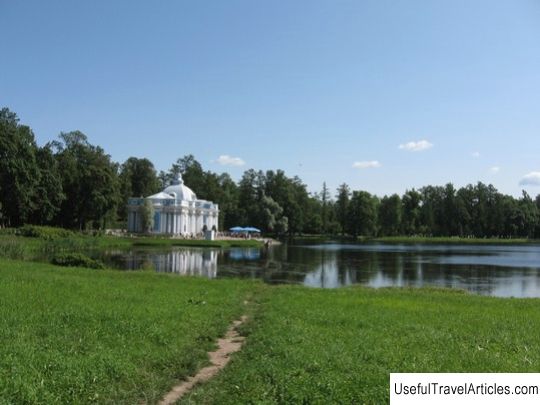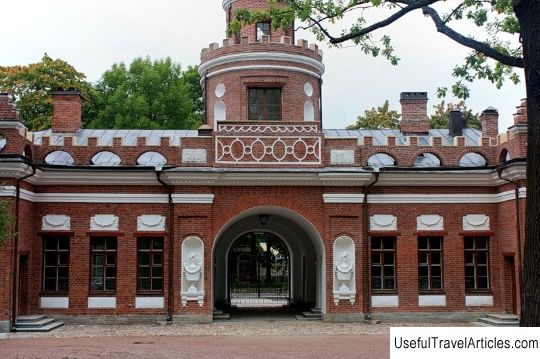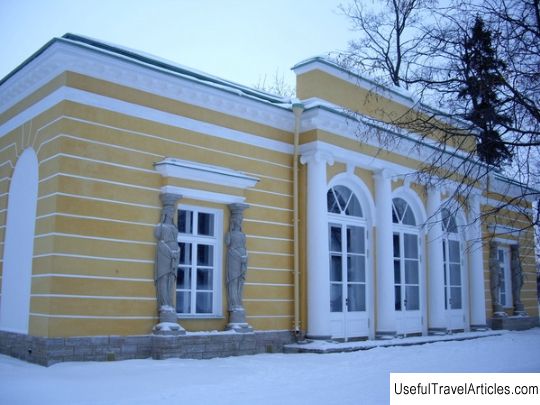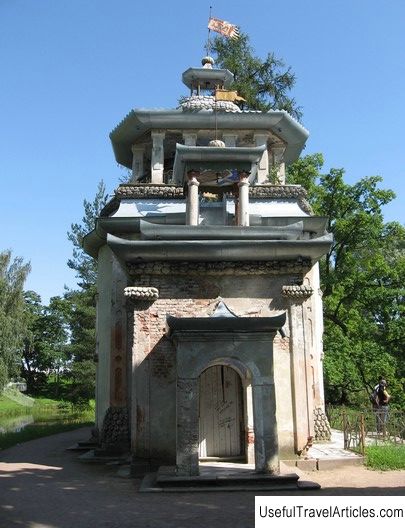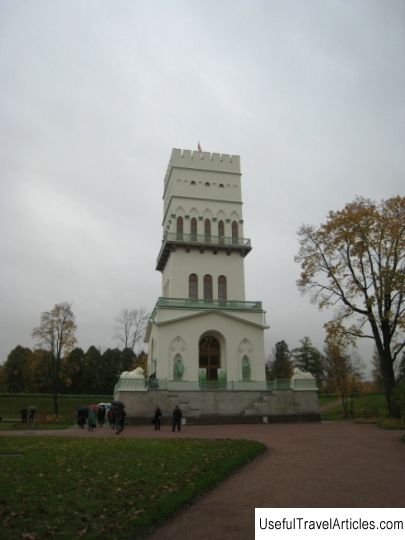Hermitage Pavilion description and photos - Russia - St. Petersburg: Pushkin (Tsarskoe Selo)
Rating: 8,0/10 (780 votes) 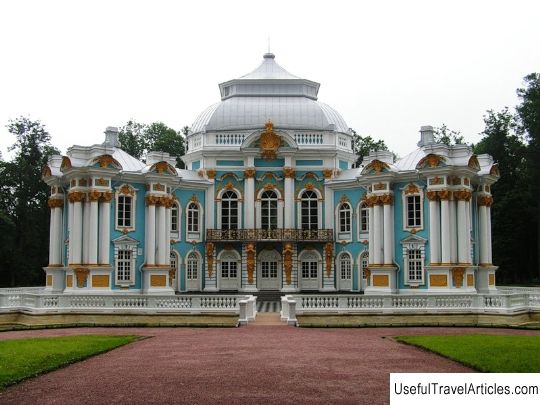
Hermitage Pavilion description and photos - Russia - St. Petersburg: Pushkin (Tsarskoe Selo). Detailed information about the attraction. Description, photos and a map showing the nearest significant objects. Photo and descriptionThe Hermitage Pavilion was built in 1749 on the territory of the Old Garden of the Catherine Park in Tsarskoe Selo, which was laid out by order of Elizabeth Petrovna after her accession to the throne. To create a regular park, the Wild Grove, planted twenty years earlier, was cut down. Fir-trees, birches, alders grew in the grove. The gardener of the Empress Lambert was involved in the arrangement of the park. The construction of the Hermitage pavilion began in 1744. The author of the project of the new building was M.G. Zemtsov; S.I. Chevakinsky. It took six months to lay the foundation of the future pavilion. The rough construction was completed in the same year. And in 1749 the Hermitage was completely rebuilt. At the same time, the facades were modified according to the project of F.B. Rastrelli. The essence of his architectural solution was that that the Hermitage pavilion was supposed to be a kind of paraphrase of the Catherine Palace. The uniformity of this pavilion with the Catherine Palace is manifested already in its very location: it stands on an alley that runs from the center of the Catherine Palace. Initially, a canal passed around the Hermitage. The area between the Hermitage and the canal was laid out in a checkerboard pattern with white and black marble slabs. The Hermitage is a two-story stone building, inside which there is a large hall in the center. In the hall, in each of the four corners, there was a gallery. The external decoration of the Hermitage pavilion is made in the Baroque style and, as befits this style, is rich, varied, and quite active, like the Catherine Palace itself. The pavilion is decorated with the same colors as the Grand Palace - gold, white and azure blue. The Hermitage was decorated with garlands, moldings, statues and vases. Many decorations were gilded, and the snow-white columns stood out perfectly against the sky-blue background. Against the background of the Catherine Palace, the Hermitage gives the impression of a chic jewelry toy. The rather expressive architecture of the Hermitage pavilion was favorably emphasized by the park around it: all the trees were neatly trimmed, and the pavilion was surrounded by a moat that was connected to the park by two bridges. The Hermitage was a favorite place for entertainment and recreation of Russian empresses. The interior of the pavilion was quite amusing. Through the windows in the hall, which were at the same time exits to the balcony, a lot of light got into the room. In addition, large mirrors were installed between the windows, which, using the effect of reflection, further increased the amount of light in the pavilion. Here dinners were arranged for foreign guests, who were surprised not only by Russian dishes, but also by various entertaining mechanisms. So, interesting devices were installed in the pavilion: prototypes of modern elevators, which were small sofas that lifted the guests of the pavilion upward using special devices. After lunch was over, the tables in the hall were lowered into the service room, and the area of the hall was vacated. During lunchtime, the dishes changed without the presence of servants: orders were accepted by announcing bells or notes, and treats were raised to the table through special pipes. The building of the Hermitage pavilion from the mid-18th century. has never been rebuilt, so its interior decoration and layout have survived to this day almost in their original form. During the war, the Hermitage was badly damaged, but it was restored. Today its halls are open to the public.         We also recommend reading Chkalovskaya stairs description and photo - Russia - Volga region: Nizhny Novgorod Topic: Hermitage Pavilion description and photos - Russia - St. Petersburg: Pushkin (Tsarskoe Selo). |
